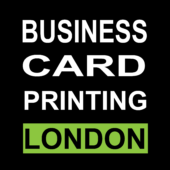The Anatomy of an Effective Business Card
In today’s digital age, where networking often happens online, the humble business card might seem like a relic of the past. However, it remains a powerful tool for making connections and leaving a lasting impression in the business world. But what exactly should be on a business card to make it effective? Let’s break it down.
1. Essential Contact Information:
- Name: Your full name should be prominently displayed.
- Job Title: Clearly state your position or role within the company.
- Company Name: Include the name of your company or organization.
- Contact Details: Provide multiple ways for people to get in touch with you, including phone number(s), email address, and physical address if relevant.
2. Logo and Branding:
- Incorporate your company logo and branding elements to reinforce brand recognition.
- Choose fonts, colors, and design elements that align with your brand identity to maintain consistency.
3. Concise and Clear Design:
- Keep the design clean and uncluttered to ensure readability.
- Use high-quality printing and materials to convey professionalism.
- Utilize white space effectively to enhance visual appeal and focus attention on key information.
4. Unique Selling Proposition (USP):
- Consider including a brief tagline or statement that highlights what sets you or your company apart from the competition.
- This could be a unique service offering, a value proposition, or a memorable slogan that encapsulates your brand essence.
5. Call to Action:
- Encourage recipients to take the next step by including a call to action.
- This could be visiting your website, following you on social media, or scheduling a meeting.
6. QR Code or NFC Technology:
- Incorporating QR codes or Near Field Communication (NFC) technology can provide an interactive element to your business card.
- These can link directly to your website, portfolio, or LinkedIn profile, offering recipients easy access to more information about you or your company.
Conclusion:
In conclusion, a well-designed business card serves as a tangible representation of your personal brand and is an essential tool for networking and making a memorable impression in the business world. By including essential contact information, logo and branding, concise design, unique selling proposition, call to action, and incorporating modern technology where appropriate, you can create an effective business card that stands out from the crowd and facilitates meaningful connections. So, the next time you’re designing your business card, remember these key elements to ensure it leaves a lasting impact on everyone you meet.
